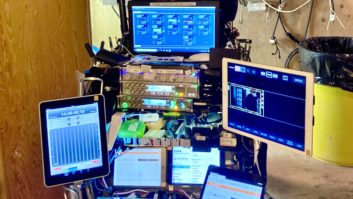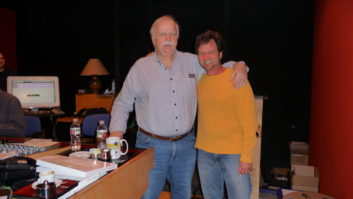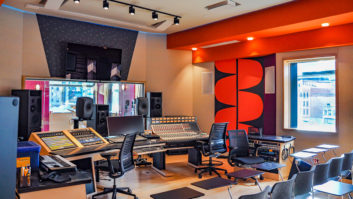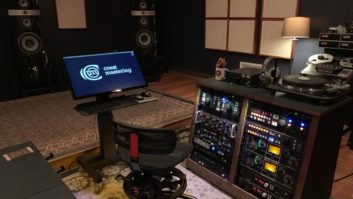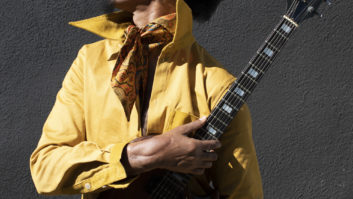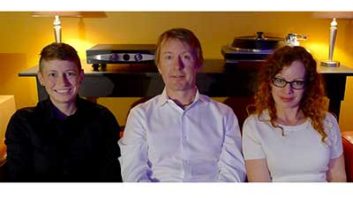Hannigan and acoustic analyst Bob Hodas have been friends for many years, making Hodas the obvious choice to help out with tuning the new studio. Hodas is well acquainted with project studio issues; in addition to his work at major complexes such as Abbey Road and NRG, he’s provided services to numerous composers, among them James Newton Howard and Patrick Williams.
“Denis had an existing structure with windows along the entire left wall — a spectacular view.” Hodas says. “So, for starters, I asked Denis for curtains — as heavy as he could get. Also, the room is quite small, with no room for bass trapping. The existing layer of absorptive polyester and thin foam on the non-window walls had made the room overall a bit too dead. We wanted to add some life.”
First, Hodas addressed the ceiling reflections, a factor detrimental to the stereo imaging. “I got rid of those using RPG Abflectors,” he notes. “They work down to about 200 Hz, so they get the high frequencies and the midrange reflection out.”
RPG Flatfusers were then placed over the soft back wall to add diffuse high frequencies. Hodas also diffused some spots on the side wall. “That was a bit unusual,” he admits. “I wanted to control first-order reflections to balance out some of the bounce that was happening with the glass. It was important to go for symmetry; otherwise, Denis’ imaging would pull to one side. So we tried to get the glass down a bit with the curtains and to bring the dead wall up with some diffusion.
“I firmly believe in symmetry, but in this instance, because of the windows, a lot of the equipment had to be placed along only one side of the room. This scenario is difficult — you wind up with the two sides having distinctly different bass responses, which requires equalization.”
Hodas used minimum-phase parametric equalizers for the electronic tuning, a Meyer CP-10S on the main Meyer HD-1 monitors and a Symetrix 552 on the Mackie HR824 surrounds.
“Denis has a practical setup,” Hodas concludes. “He got the aesthetic feel that is important to him — when he’s being creative and writing, he doesn’t need perfect acoustics. When he’s getting serious about the audio, he closes the curtains and gets down to business. I think it’s worked out pretty well.”
